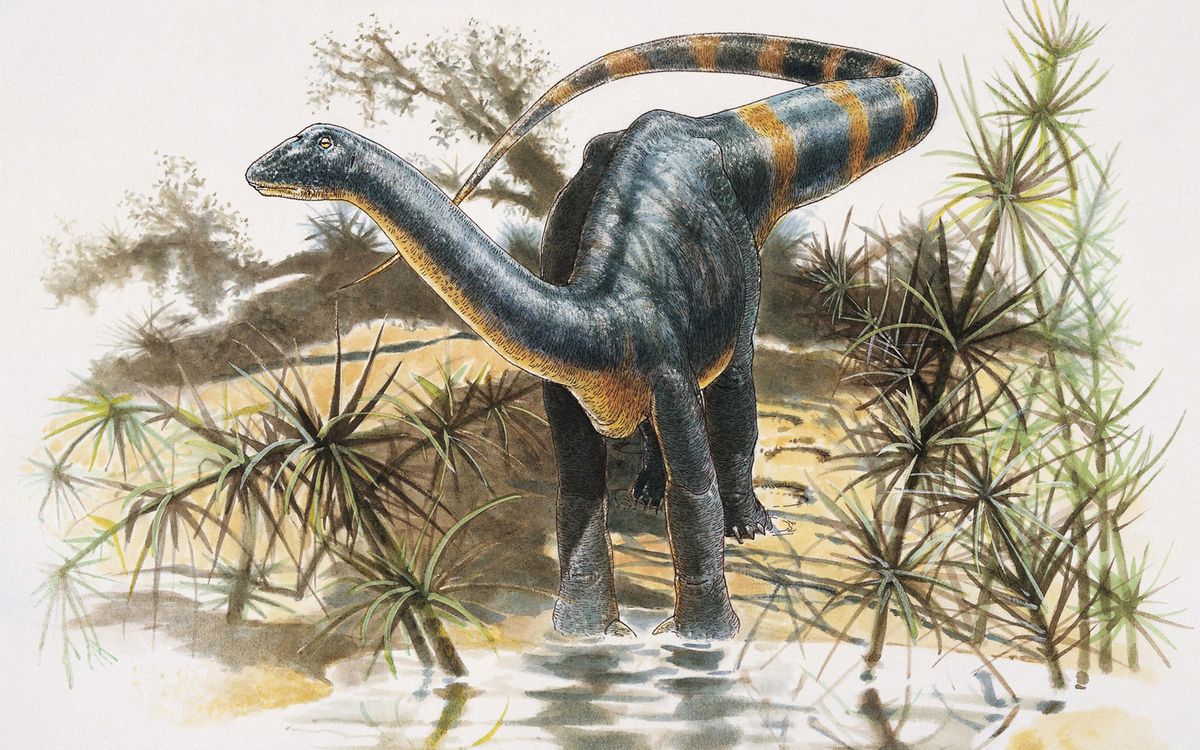Dwarf Dinosaur Once Roamed Transylvania

A relative of some of the largest dinosaurs to ever plod the Earth never grew to be more than horse-size, confirming the beast was indeed a dwarf dinosaur, a new study reveals.
The diminutive dino lived in what is now Transylvania, Romania, some 75 million to 70 million years ago.
The remains of the dinosaur, named Magyarosaurus dacus, have been debated by scientists for years. Did they belong to an actual dwarf dinosaur or a youngster that would later grow into a hefty adult?
And M. dacus belongs to a group of titanosaurs, which were giant sauropods (plant-eating dinosaurs). Compared with one of the largest titanosaurs, Argentinosaurus, which ballooned to about the weight of 10 African elephants, this guy would've been teensy.
Now, scientists have looked closely at the bone structure from remains of the small dinosaur, finding clear evidence that the bones came from fully grown individuals.
Bony history
The dinosaur's bones have a long history.
Sign up for the Live Science daily newsletter now
Get the world’s most fascinating discoveries delivered straight to your inbox.
In 1895, the sister of an eccentric paleontologist Franz Baron Nopcsa discovered small dinosaur bones on their family estate in Transylvania. Around the same time another paleontologist had turned up dwarf mammals, such as tiny elephants and hippopotamuses, on a Mediterranean island. Nopcsa interpreted the dinosaur bones in the same vein, suggesting the remains belonged to dwarf dinosaurs.
Among these finds were a number of bones belonging to a sauropod dinosaur which Nopcsa named Magyarosaurus dacus, after his native country.
Later other sauropod bones were found, those belonging to the giants of the titanosaur group. That led scientists to suggest the bones of M. dacus were really just juveniles and would have later grown to be enormous as adults.
Aging bones
To solve the mystery, Koen Stein of the Steinmann Institute Division of Paleontology, University of Bonn, Germany, and his colleagues cut up the bones from about 19 individuals of this species, collecting around 21 samples, which they looked at under a high-powered microscope. They were looking for certain microstructures that have been found to change along the life continuum of sauropod dinosaurs, from juveniles to mature individuals to the seniors.
For one, the passages where blood vessels flow change with time, becoming filled in with bone material. In addition, a process called remodeling occurs in which the old bone matrix gets broken down, forming tiny holes in the bone that get filled in with new bone matrix.
For humans this remodeling process starts in the teen years, Stein said. "In humans by the time you're 25 the complete skeleton has been completely resorbed and re-deposited again," Stein told LiveScience.
For M. dacus' bones, they found the remains belonged to animals that were between 95 and 99 percent of their maximum size.
"We were able to prove that by looking at the microstructure of the bone that they weren't juvenile," Stein said.
Island dwarfs
The dwarf body size was probably a result of environmental factors found on the island where the dinosaur is thought to have lived. During the Cretaceous period (from about 144 million to 65 million years ago), Transylvania is thought to have been a small island in the Tethys Ocean, which has now become the Mediterranean Sea.
In general, animals get big to avoid large predators, and so when large predators aren't around there's no need to waste energy growing to a large size, the thinking goes. Islands often lack such big beasts.
There is no record of any oversized predators on the island that's now connected to the mainland, Stein said.
Island environments also generally support only limited resources.
"To sustain a healthy population of individuals you need enough food," Stein said. "And if there's a limitation on food the biggest individual with big food requirements will just starve."
And so keeping a petite figure is all about survival in the animal kingdom.
The results are now published in the journal Proceedings of the National Academy of Sciences.
- 25 Amazing Ancient Beasts
- Avian Ancestors: Dinosaurs That Learned to Fly
- Images: Dinosaur Drawings
Jeanna Bryner is managing editor of Scientific American. Previously she was editor in chief of Live Science and, prior to that, an editor at Scholastic's Science World magazine. Bryner has an English degree from Salisbury University, a master's degree in biogeochemistry and environmental sciences from the University of Maryland and a graduate science journalism degree from New York University. She has worked as a biologist in Florida, where she monitored wetlands and did field surveys for endangered species, including the gorgeous Florida Scrub Jay. She also received an ocean sciences journalism fellowship from the Woods Hole Oceanographic Institution. She is a firm believer that science is for everyone and that just about everything can be viewed through the lens of science.













